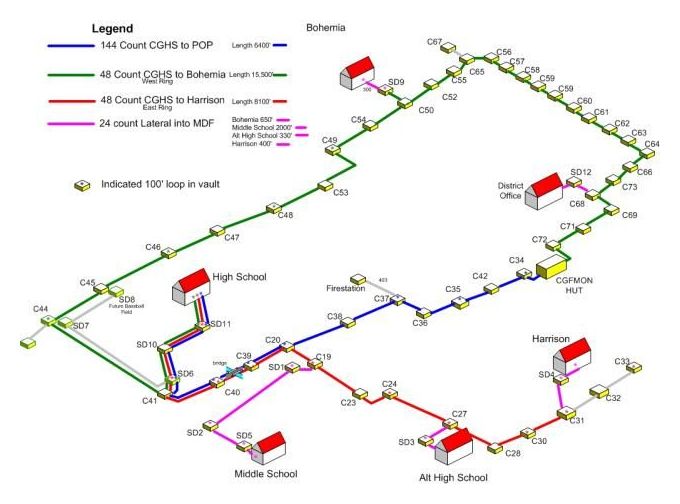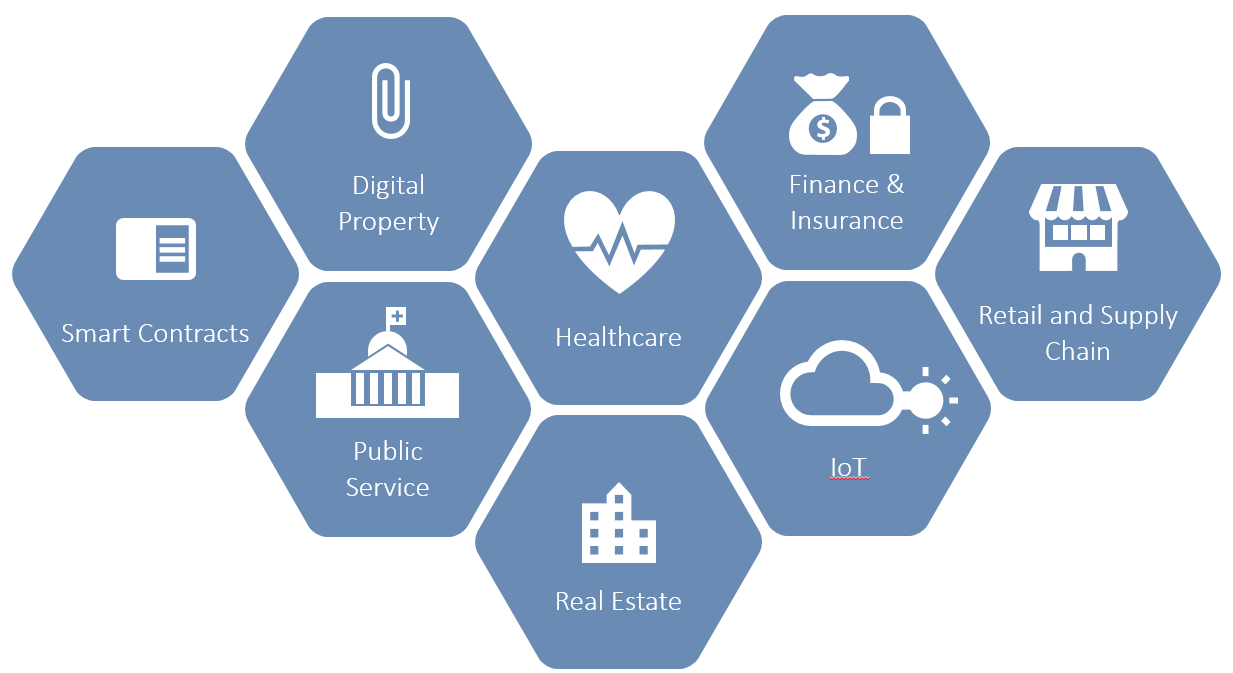Technologies
Transversal Technologies
We are good at matching customers' needs with existing products, having the ability to research existing products and software components.
We set up the Team to create your IT solution, including designing or building a customized architecture or application, integrating it with new or existing hardware, packaged and custom software, and communications infrastructure.
Fiber optics
Wavelength-division multiplexing (WDM) is the practice of multiplying the available capacity of optical fibers through use of parallel channels, each channel on a dedicated wavelength of light. This requires a wavelength division multiplexer in the transmitting equipment and a demultiplexer (essentially a spectrometer) in the receiving equipment. Using WDM technology now commercially available, the bandwidth of a fiber can be divided into as many as 160 channels to support a combined bit rate in the range of 1.6 Tbit/s.
Wavelength Division Multiplexing (WDM) enables carriers to deliver more services over their existing optical fiber infrastructure by combining multiple wavelengths on a single fiber. Each service is carried over a separate wavelength, thus increasing the capacity of the fiber by the number of wavelengths transmitted. Coarse Wavelength Division Multiplexing (CWDM) and Dense Wavelength Division Multiplexing (DWDM) are both mature WDM technologies, using standardized ITU-T wavelengths. CWDM and DWDM differ in complexity, offered capacity, cost and the markets they address. Due to its low cost and simple deployment, CWDM is a good fit for access networks and many metro/regional networks.
Data Center
Every data center begins with fiber optic connections to the Internet, usually to several providers for redundancy. Entrance facilities must be provided for multiple cables connecting to the outside communications networks. Incoming cables will terminate in racks with connections to routers that in turn connect to the servers hosted in the data center. These connections will carry vast quantities of data over singlemode optical fibers at 10-100Gb/s. Within the data center, the goal is to move data as fast as possible with the lowest latency and that means using the fastest possible data communications links. Gigabit Ethernet is too slow. 10 gigabit Ethernet and Fibre Channel are commonly used today. Fibre Channel is moving to 16 Gb/s and Ethernet is headed for 40 Gb/s and 100 Gb/s. The big data center users want 40/100 Gb/s as fast as possible and are pushing network standards committees and manufacturers to produce useable products as soon as possible.

The next step is to 40G or 100G. Some users are thinking about using the UTP Cat 8 cable in development as part of a 40G upgrade. Some big users are skipping 40G and going right to 100G, generally on SM fiber.
Access & Metro
Many metropolitan networks have not been upgraded for years. Continuous increase in traffic has left some areas with little or no room for growth. The lack of network capacity, also known as fiber exhaust, is a problem carriers are looking to solve immediately. Adding C/DWDM in the optical transport is a simple and cost-effective solution for fiber exhaust relief. New services can be added over a single existing optical fiber, without interrupting service to existing customers.
C/DWDM solutions provide multiplexing solutions for single fiber or dual fiber systems. They support multiple applications including: Fiber Exhaust Relief, Ethernet over WDM applications, WDM wireless backhaul, IP DSLAM backhaul, WDM signal regeneration, Datacenter interconnects, LAN/WAN extension
From the PoP to the customer: layer 3, layer 2 and layer 1 equipment
Passive WDM is an implementation of C/DWDM that uses no electrical power. It separates the wavelengths using passive optical components such as bandpass filters and prisms. Passive WDM is widely used to design and deploy low cost access networks over leased fiber. Using one fiberpair, it is possible to backhaul 3/4G towers and provide gigabit eth or SDH services to corporate customers.
WDM solutions provide multiplexing solutions for single fiber or dual fiber systems. They support multiple applications including:
Cloud enabling technologies
It is time to look at your organization holistically, and create a game plan for using cloud computing to your advantage. Why? Cloud underpins mobility, analytics and social media, for starters. We can help your organization in a number of cloud technologies.
"Cloud computing is using the Internet to deliver hardware and software services instead of keeping physical hardware and software at your office. Cloud computing providers deliver hardware and software over the Internet. Cloud computing users access hardware and software over the Internet"
Web Application Acceleration & Content Delivery Networks (CDN)
Enterprises invest heavily in developing web-based applications that move processes like e-shops, supply chain management, customer support, sales orders, extranets ... And everyone connected to the web-enabled enterprise expects instant, secure, reliable access to those web applications, increasingly through mobile devices.
But centrally located applications don't always perform consistently, and when they're slow or unreliable users become frustrated or avoid using them altogether. Infrastructure build-outs require additional capital expenditure and rarely solve the problem, pushing ROI even further out of reach.
Web Application Delivery & Acceleration cloud-based services enable enterprises to deliver any-time, any-where, web-based applications that are fast, reliable, and secure, in a cost-effective manner.

Cloud Security: DNS + Web Application Firewall (WAF) and DDoS Protection
As security threats become more sophisticated and digital opportunities multiply, businesses need to be proactive in their security efforts.
Gartner is predicting the cloud-based security services market, which includes secure email or web gateways, identity and access management (IAM), remote vulnerability assessment, security information and event management to hit $4.13 billion by 2017.
Infrastructure as a service (IaaS)
The cloud provides start-ups with the same hardware and software technologies that are enjoyed by enterprises, without the upfront capital expenses that virtually all new start-ups are unable to shoulder. The cloud's metered-service pricing model enables start-ups to open shop and enter markets that would have otherwise been off limits. Here are a few benefits that are especially relevant to start-ups: Reduced Upfront IT Expenditures, Acquisition of Enterprise-Level Software, Anywhere Access.
Platform as a service (PaaS)
Platform as a service (PaaS) is a category of cloud computing services that provides a platform allowing customers to develop, run, and manage web applications without the complexity of building and maintaining the infrastructure typically associated with developing and launching an app.
PaaS can be delivered in two ways: as a public cloud service from a provider, where the consumer controls software deployment and configuration settings, and the provider provides the networks, servers, storage and other services to host the consumer's application; or as software installed in private data centers or public infrastructure as a service and managed by internal IT departments.
Blockchain enabling technologies
Blockchain has traditionally largely been known as the technology that underpins cryptocurrencies like bitcoin. blockchains store data across 'blocks' rather than on one central server, with new information only being entered into the 'chain' once a cryptographic key has been solved by a computer. For this reason blockchain is also known as distributed ledger technology (DLT). Information on the blockchain cannot be erased, meaning it offers a definitive record of digital events.
A growing number of startups are exploring how to harness the power of blockchain technology for a range of different purposes.
Application Areas
- Cripto currencies, commodities, diamonds, etc
- Health and Medical Records
- Digital identity, identification & authentication
- Government & organizational governance
- IOT
- Network infrastructure
- Media & content distribution
- Supply chain certification
- Real estate
- Gaming & gambling

Telco All IP enabling technologies
When everything is IP, the telecom industries and IT industries will basically become one and the same; It'll be important to make the transition while preserving what's good about traditional phone networks, such as reliability and emergency services. Telcos will shed lots of complexity and potentially save a ton of money, because network services and content delivery would all be delivered using the same technology.
The transition to an all-IP network will provide higher call quality, will also integrate voice throughout the Web, adding to the already popular services like Skype, Facebook, and Google Hangouts.
Software defined networks (SDN)
Software-defined networking (SDN) is an architecture purporting to be dynamic, manageable, cost-effective, and adaptable, seeking to be suitable for the high-bandwidth, dynamic nature of today's applications. SDN architectures decouple network control and forwarding functions, enabling network control to become directly programmable and the underlying infrastructure to be abstracted from applications and network services.
Software-defined networking (SDN) is a new approach to designing, building, and managing networks that separates the network's control (brains) and forwarding (muscle) planes to better optimize each.

Offering a centralized, programmable network that can dynamically provision so as to address the changing needs of businesses, SDN also provides the following benefits: reduce CapEx, reduce OpEx, deliver agility & flexibility, enable innovation (new breed of services).
IMS
The IP Multimedia Subsystem or IP Multimedia Core Network Subsystem (IMS) is an architectural framework for delivering IP multimedia services.
The IP Multimedia Subsystem (IMS) is a concept for an integrated network of telecommunications carriers that would facilitate the use of IP (Internet Protocol) for packet communications in all known forms over wireless or landline. Examples of such communications include traditional telephony, fax, e-mail, Internet access, Web services, Voice over IP (VoIP), instant messaging (IM), videoconference sessions and video on demand (VoD).
